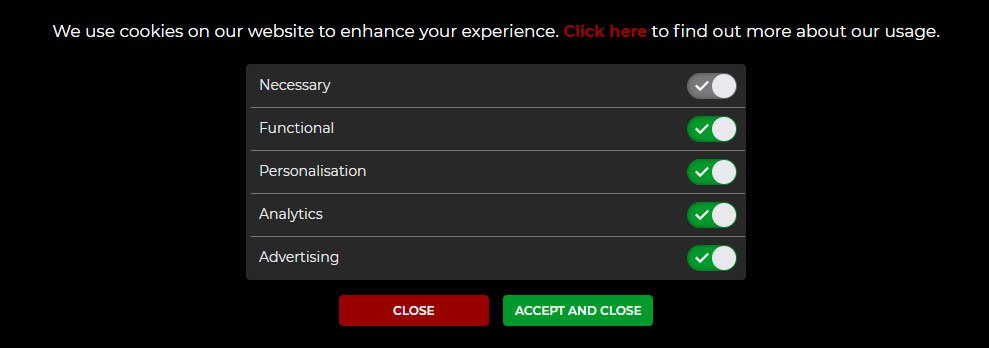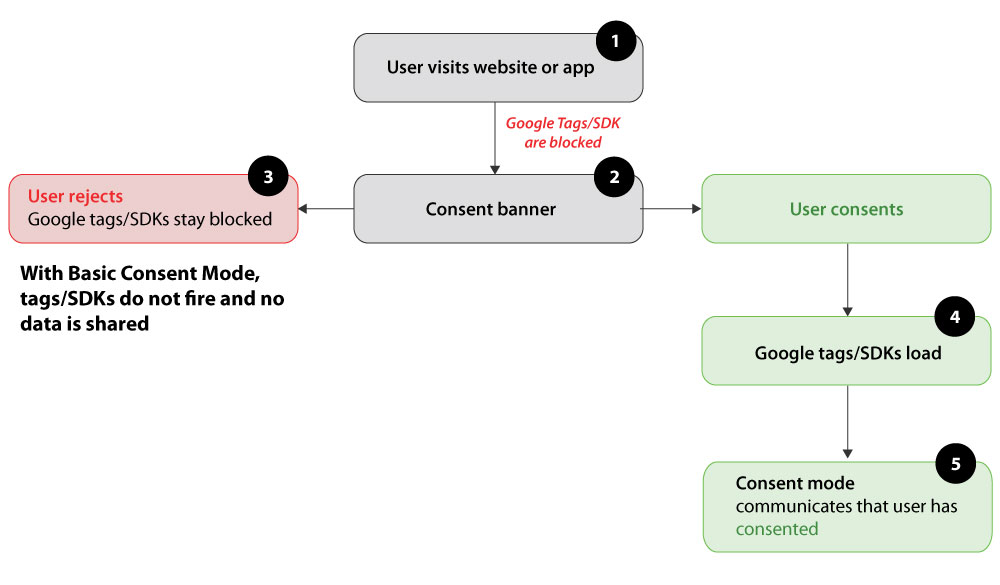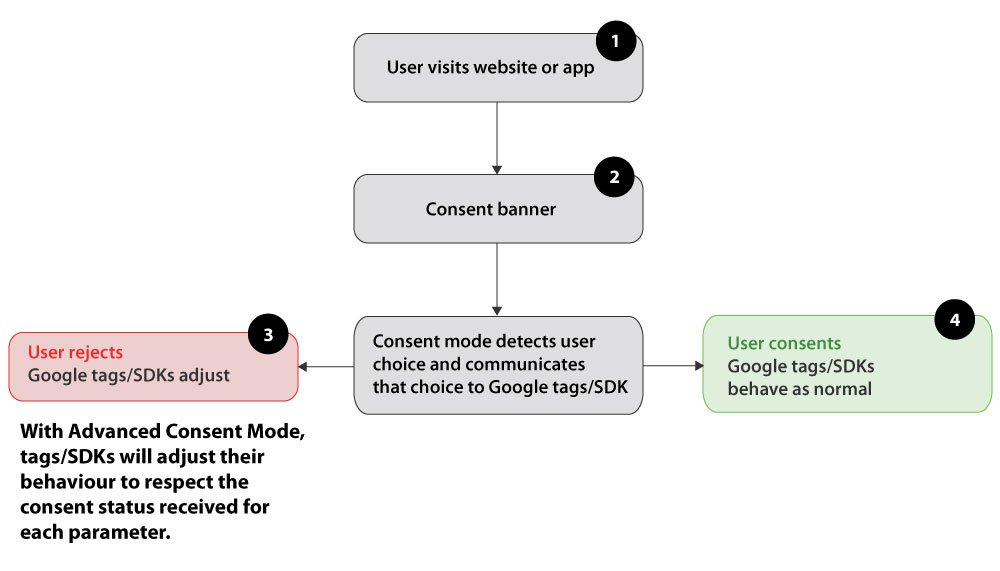
Understanding Google Consent Mode v2
Google's Consent mode has emerged as a crucial tool for website owners and marketers to navigate the complex landscape of user consent and data privacy regulations. With the recent introduction of Consent mode v2, there have been notable enhancements and changes from its predecessor. In this article, we'll delve into the differences between Consent mode v1 and Consent mode v2, exploring how these updates may impact you.
Consent mode is a way to ensure a website’s use of cookies and visitor data is compliant with GDPR and other data privacy regulations within the European Economic Area (EEA) and the UK.
Hopefully you are familiar with the role of consent mode v1 but if not, let’s quickly refresh your memory. Consent mode v1 communicates consent (given or denied) for two parameters controlling the storage of cookies and device ID for analytics and advertising.
You will see this in the form of a Cookie banner that will pop up for new visitors to your site, asking them to define for what purpose they accept or decline cookies. Necessary cookies are selected by default (as they are needed to access the website) but the rest are user-selectable.

Example of a typical cookie banner, allowing users to define whether they accept or decline the use of cookies for functions, personalisation, analytics, or advertising.
Implementing Consent Mode v2
Starting in March 2024, Consent mode v2 introduces two further parameters pertaining to the usage of user data for both advertising and personalisation, and is required in the EEA and UK in order to keep using personalisation and remarketing features. When implementing Consent mode v2 there are two choices, Basic Consent mode and Advanced Consent mode, let's explore the differences.
Basic Consent Mode
Basic Consent Mode means that your Tags/SDK are blocked by default, meaning NO data is transmitted to Google at all (not even your users’ consent status), unless the user consents. This means that ad performance is likely to be less accurate and potentially more expensive.

- The Analytics and/or advertising Tags/SDK have been configured to only fire (unblock) after receiving a specified consent signal from the user.
- A user navigates on your website or app and indicates consent status on the consent banner.
- If a user denies consent, the advertiser or website developer does not load the Tags/ SDK and as such, Consent mode is not triggered. This means no data is collected at all about these users.
- If a user grants consent, as configured in step 1, the Tags/SDK will unblock and load to conduct normal conversion measurement.
- Consent mode will communicate that consent has been ‘’granted’’ by the user.
Advanced Consent Mode
If you use Advanced Consent mode it means that the Google Tags are unblocked by default and load when a user opens the website. Even if the user then denies consent, the Google Tags will still send cookieless pings that allow you to use additional capabilities in Google Analytics 4 such as behavioural modelling and modelled data. This will include functional and non-identifying information such as country, device type, time, browser type, page URL plus other fields set by the advertiser (that are non-identifying such as order ID, conversion value etc…). This helps fill in gaps in your data for more accurate conversion metrics using the additional data it has collected, which helps to improve the performance, and potentially reduce the cost, of your ads.

- Analytics and advertising Tags/SDK load and Consent Mode API load when a user opens the website or app.
- The user indicates consent status on the consent banner.
- If a user denies consent, Consent mode will communicate it to the Tags/SDK so that they can adjust their behaviour in order to respect the users choices.
- If a user grants consent, Consent mode will communicate to the Google Tags/SDK that they conduct normal conversion measurement.
Your options
Now there seems to be a lot of misinformation around Consent mode v2 and what you have to do, so let's clear things up regarding your options:
- If you don’t use any ad personalisation and remarketing features, or don't intend to, then Consent mode v1 will be sufficient for your requirements and you DON’T need to upgrade to Consent mode v2. It is NOT mandatory!
- If you do use, or intend to use, any ad personalisation and remarketing features, then you WILL need to upgrade to Consent mode v2 in order to ensure compliance.
- If you do upgrade to Consent Mode v2, you have the choice of implementing either the Basic or Advanced Consent mode options which can affect the performance and cost of your ads.
- You DON’T need to use a dedicated CMP (Consent Management Platform) such as Onetrust or Cookiebot in order to be compliant. Whilst they will help ensure your compliance, they are not necessary.
- You DON’T have to use a Google partner CMP to implement Consent Mode v2. A non-partner CMP or in-house solution is absolutely fine for ensuring compliance.
In summary
Building upon the foundations laid by Consent mode v1, Consent mode v2 prioritises enhanced privacy and compliance with data regulations such as GDPR and CCPA. By leveraging server-side tagging and improved consent management capabilities, Consent mode v2 enables website owners to uphold user privacy preferences more effectively and offers more granular control over user consent preferences compared to its predecessor. It also means you can configure specific tags and pixels to respect user preferences, allowing for more nuanced data collection practices, including the collection of aggregated data when a user hasn't consented, which helps to improve ad performance and lower costs (via modelling).
However, just to be clear, it is not mandatory and if you don't intend to use the personalisation and remarketing tools, not necessary. It's also not necessary to implement a Consent Management Platform in order to be compliant. Something like tradeit's cookie manager v2, using Advanced Consent mode, is perfect for ensuring compliance.
